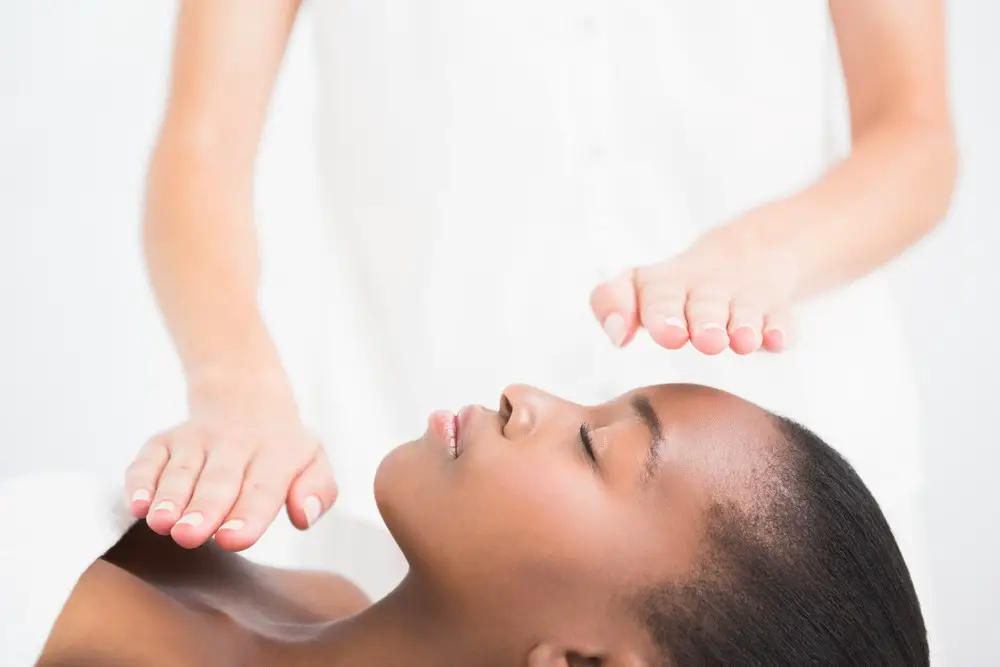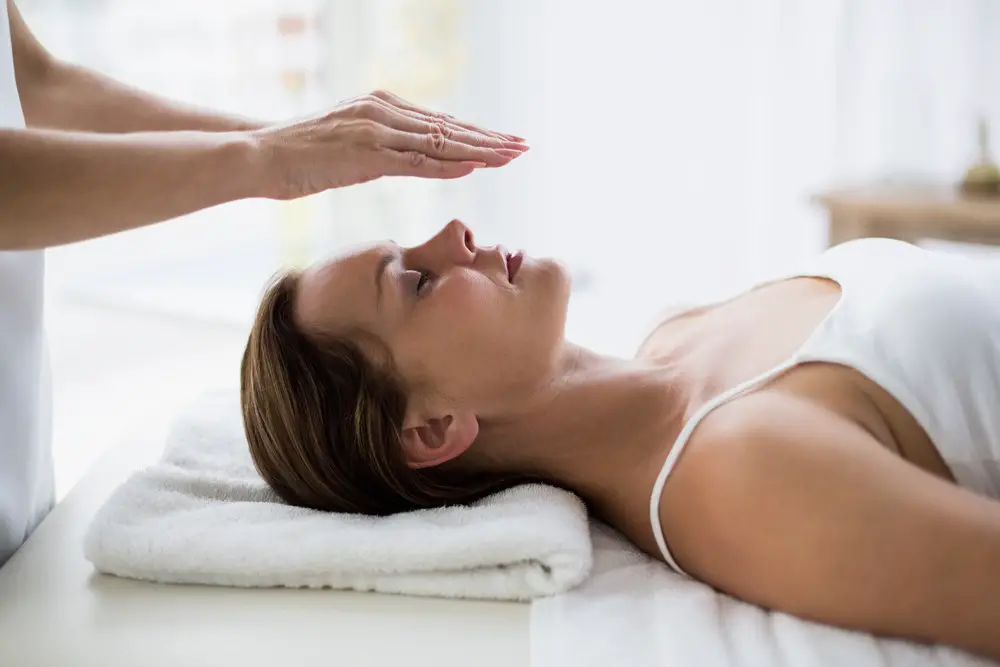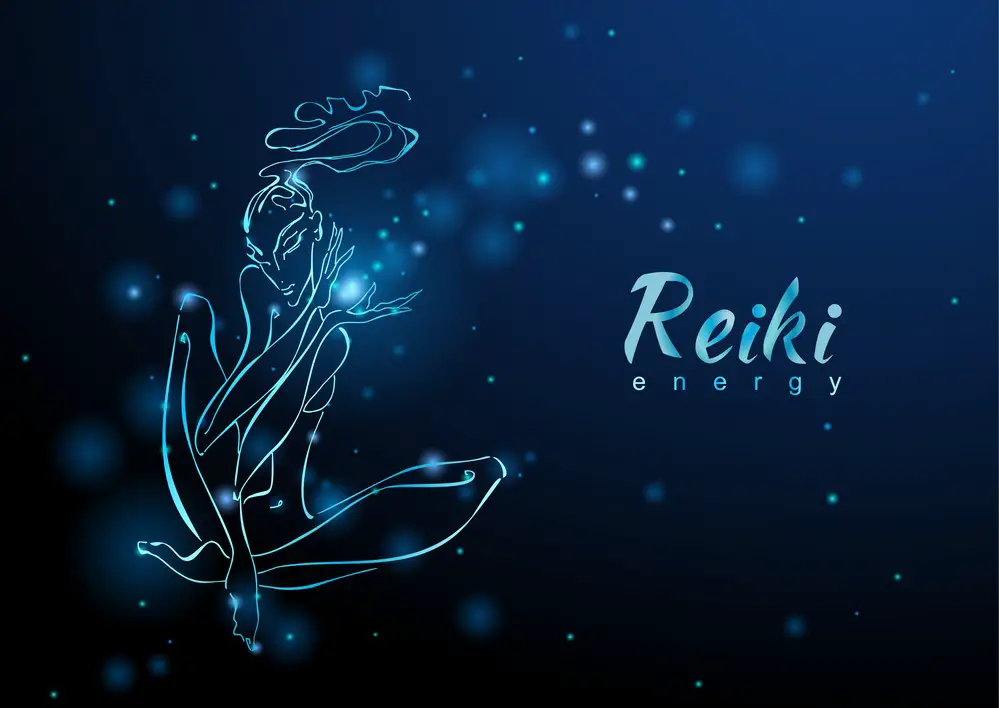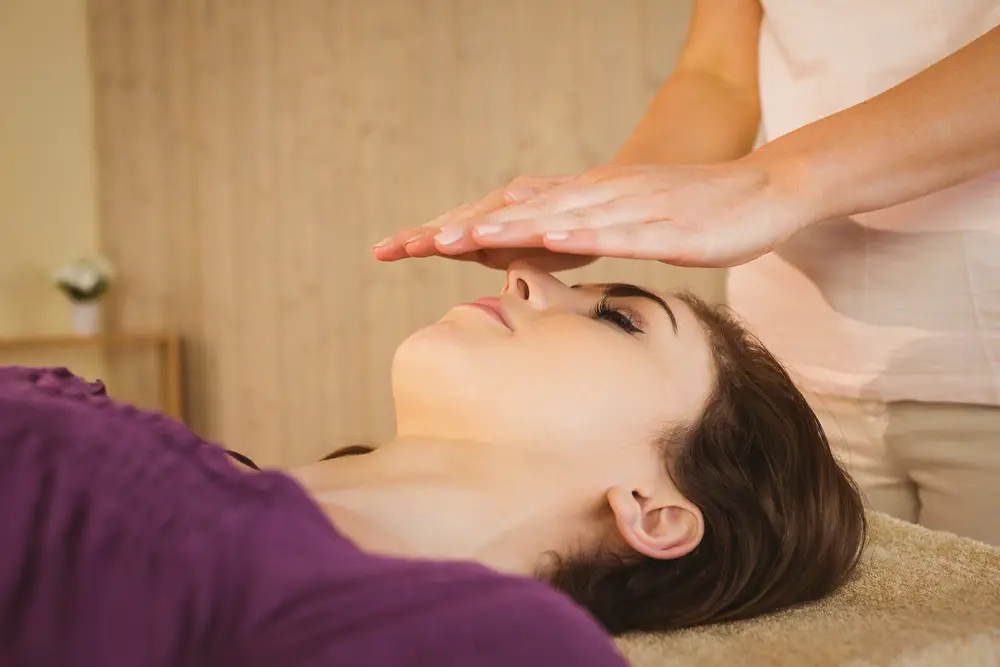As a BetterHelp affiliate, we receive compensation from BetterHelp if you purchase products or services through the links provided
When deciding what to wear for Reiki, it’s important to prioritize comfort and the free flow of energy. As a healing practice, Reiki emphasizes the need for your body to be at ease to facilitate the healing process. Your attire should accommodate a relaxed state, with soft, loose-fitting clothing being ideal. Breathable fabrics, like cotton or linen, can enhance your comfort level during a session.
The colors of your clothing may also play a role in your Reiki experience. Some practitioners believe in color therapy and suggest that certain colors can influence the energy flow. Light, non-restrictive footwear or simply going barefoot is often preferred to keep you grounded and connected during the practice. Remember, the goal is to create an environment conducive to relaxation and healing, which includes how you dress.
Accessories should be minimal to avoid distractions. Layering your clothing can be a wise choice, as it allows you to adjust to the temperature and maintain a comfortable level of warmth. For Reiki practitioners, attire might also need to reflect the formality of their practice, balancing professionalism with the principles of Reiki. But above all, the focus should be on fostering the most relaxing and effective healing environment.
Key Takeaways
- Wear soft, loose-fitting clothing for comfort and energy flow.
- Opt for light footwear or bare feet to stay grounded.
- Minimize accessories and consider layers for maintaining a comfortable temperature.
 Understanding Reiki and Attire Significance
Understanding Reiki and Attire Significance
When you step into the world of Reiki, what you wear can influence the practice. Comfort and energy flow are paramount.
Reiki Fundamentals
Reiki is a form of energy healing where a practitioner aims to facilitate positive energy flow to promote well-being. It’s founded on the belief that by channeling energy through touch, the body’s natural healing processes are stimulated, and emotional or physical imbalances are addressed.
Key points to remember about Reiki:
- Non-invasive: The practice involves light contact or hands hovering over the body.
- Universal energy: It’s believed that the healed experiences a transfer of universal energy from the practitioner.
Key Takeaway: Reiki is about creating balance and supporting the body’s healing, which sets the tone for the significance of clothing during a session.
The Role of Attire in Reiki
Clothing in Reiki should respect the energy flow and contribute to the healing process. As a participant, whether as a practitioner or receiver, the clothes you wear can impact the experience.
Here’s what to consider for Reiki attire:
- Comfort: Wear loose-fitting, breathable clothing to facilitate a relaxed and unimpeded energy flow.
- Fabric: Natural fibers like cotton or linen are preferred as they’re believed to support energy transmission better.
- Color: Some practitioners may recommend colors corresponding to specific chakras you’re focusing on.
Key Takeaway: Your choice of clothing can enhance your Reiki experience by working in harmony with the energy exchange central to the practice.
 Choosing the Right Clothing
Choosing the Right Clothing
In Reiki, your comfort should steer your attire to foster a relaxed and healing atmosphere.
Materials and Fabrics
Your Reiki session is a time to connect with your inner self, and the clothes you wear play a pivotal role in this journey. Prioritize natural fibers like cotton or linen, known for their breathable qualities, allowing energy to flow unimpeded. Conversely, synthetic materials may not be as accommodating as they often impede breathability and can create discomfort.
- Cotton: Opt for this natural, breathable fabric to maintain comfort.
- Linen: With its loose weave, linen ensures better airflow.
Key Takeaway: Clothes made from natural fibers enhance comfort during Reiki by promoting breathability.

Comfort and Fit
For the practice of Reiki, let comfortable clothing be your guide – think of loose-fitting garments that don’t constrict, pinch, or restrict your movement. Your garments should allow unrestricted movement, as a relaxed body fosters a more receptive state of being.
- Aim for a snug yet comfortable fit that doesn’t tighten around any part of your body.
- Loose-fitting clothes: Grant the flexibility needed for relaxed, therapeutic sessions.
Key Takeaway: Opt for comfortable, loose-fitting attire to support ease of movement and relaxation during Reiki sessions.
Color Therapy in Reiki Fashion
When selecting attire for your Reiki session, incorporating color therapy can significantly enhance the healing experience. Let’s explore how the right shades can contribute to harmony and energy flow.
Colors and Energy
Each color you wear may influence your energy differently. The key is to choose colors that amplify balance and support the Reiki principles of healing and peace.
- Red stimulates and energizes. It’s associated with the root chakra and can promote a sense of grounding.
- Orange is linked with the sacral chakra; it encourages creativity and healing.
- Yellow resonates with the solar plexus chakra, helping to boost personal power and confidence.
- Green corresponds to the heart chakra and promotes harmony and love.
- Blue is connected to the throat chakra, aiding in communication and expression.
- Indigo is tied to the third eye chakra, enhancing intuition and insight.
- Violet or White relates to the crown chakra, representing spiritual connection and enlightenment.
It’s also wise to consider neutral colors like black, white, brown, or gray, which can be calming and grounding. Neutrals are great for not overpowering the chakra-specific colors, ensuring you’re not throwing off your energy with too much visual stimulation.
Remember, there are no strictly “right colors” for everyone. Trust your instincts about what hues feel best for you, and don’t be afraid to mix and match.
Key Takeaway: Opt for colors that resonate with your intentions for the Reiki session to deepen the healing and harmonizing effects.
Appropriate Footwear for Sessions
When preparing for a Reiki session, choosing the proper footwear is vital for your comfort and overall ambiance.
Footwear Choices
Socks:
- Comfort: Opt for soft, non-restrictive socks that keep your feet warm without causing discomfort.
- Materials: Natural fibers like cotton, bamboo, or wool can provide breathability and comfort.
Barefoot Options:
- Connection: Going barefoot helps some people feel a grounding connection to the earth.
- Hygiene: If barefoot, ensure your feet are clean to maintain a comfortable space.
Footwear Examples:
- Slippers: Soft slippers are great for easy removal and cozy feet during the session.
- Comfortable Shoes:
- Ease of Removal: Look for shoes without laces or buckles for quick removal before the session.
- Support: If shoes are your preference, select a pair with adequate support to make your walk to the session room comfortable.
Remember to Remove:
- Respect: Always remove your shoes before climbing onto the Reiki table to respect the cleanliness of the healing space.
The critical takeaway is prioritizing foot comfort and cleanliness for a positive Reiki experience.
 Layering for Comfort and Energy Flow
Layering for Comfort and Energy Flow
In Reiki, your attire can significantly influence your comfort and the effectiveness of energy flow. Let’s explore how proper layering can align with these principles.
Adapting to Temperature Changes
As you engage in Reiki, your body’s temperature may fluctuate. Dressing in a way that allows you to adapt to these changes without interruption is crucial. Here’s how you can master the art of layering:
- Begin with a base layer like a snug pair of yoga pants or leggings. These should be close-fitting yet stretchy to maintain warmth and encourage ease of movement.
- Add a second layer, such as loose-fitting shorts or a skirt, over your yoga pants if you need more warmth or prefer additional coverage.
- Opt for a flowy top as your upper base layer. Soft materials like cotton or bamboo ensure breathability and maintain air circulation, contributing to a consistent body temperature.
- Throw a light sweater or cardigan on top that can be easily removed. Something with an open front is ideal, so you can wrap it around yourself or take it off with minimal effort.
- Footwear is often optional in Reiki, but wear socks that can be slipped off easily to manage your warmth throughout the session if necessary.
Your clothes should work as a team, providing comfort and allowing for natural movement while facilitating proper air circulation. You need pieces that complement each other rather than just throwing on multiple items.
By dressing in layers, you maintain control over your body’s warmth, ensuring you don’t get distracted by being too hot or cold. Your focus can then remain on the Reiki practice and the energy flow within and around you.
Jewelry and Accessories Considerations
When you’re gearing up for a Reiki session, the proper attire is essential for ensuring comfort and facilitating energy flow. This includes careful consideration of the jewelry and accessories you choose to wear.
Selecting Minimal Jewelry
- Opt for simple pieces that won’t interfere with the session. A delicate chain or a small ring can be fine, but it’s best to leave large, dangling earrings or chunky necklaces at home.
- Focus on comfort; avoid anything too tight or restrictive, like rigid bracelets or watches, which could impede movement or cut off circulation.
- Consider the symbolism of your pieces. Something with personal spiritual significance may enhance your experience, while ornamental jewelry is usually less appropriate.
- Remember, less is more. A minimalist approach allows for a freer flow of energy, minimizing distractions for you and the practitioner.
Remember that your comfort and unobstructed energy flow is paramount during a Reiki session. Your accessories should be minimal and reflect a tranquil and harmonious vibe to complement the Reiki session’s purpose.
 Special Considerations for Reiki Practitioners
Special Considerations for Reiki Practitioners
As a Reiki practitioner, your attire plays a crucial role in your practice, affecting your comfort and ability to channel energy effectively.
Guidelines for Practitioners
- Comfort: Choose garments that feel good against your skin and allow unrestricted movement. Loose, breathable fabrics like cotton or linen can be ideal.
- Why Comfort Matters: Your physical ease helps maintain focus and promotes the free flow of energy.
- Color Choices: Opt for colors that reflect a calming influence. Soft hues, such as light blues or greens, often work well.
- The Impact of Color: These tones can enhance the healing environment and might even support your intention-setting process.
- Footwear: It’s common to practice Reiki in bare feet or with socks to stay connected to the earth’s energy.
- Staying Grounded: Direct contact with the ground can fortify your grounding, an essential part of energy work.
- Accessories: Keep jewelry and watches to a minimum. These items can interfere with energy channeling.
- Minimizing Distractions: Fewer adornments mean fewer obstacles, ensuring a smoother energy transmission.
- Practicality: Pockets may be handy, allowing you to carry essential items like crystals or oils without interrupting the session.
- Accessibility: Having what you need at arm’s reach aids in a seamless practice.
- Cleanliness: Ensure your clothes are clean, as this reflects respect for the practice and your clients.
- Guidance Role: Remember, your appearance can guide the session’s ambiance, so set the tone with thoughtful attire.
By dressing mindfully, you support your role as a conduit for healing — setting the stage for a powerful and effective practice.
 Maximizing Relaxation During Reiki
Maximizing Relaxation During Reiki
Choosing the proper attire for your Reiki session can significantly affect your ability to relax and benefit from the healing experience. Comfort is paramount, and the fabrics you choose can enhance this.
Clothes That Enhance Calmness
Your clothing should serve as a cocoon of comfort, encouraging a sense of peace and ease. Here are some tips to dress in a way that promotes relaxation during Reiki:
- Opt for Loose-Fitting Clothes: Tight clothing can restrict circulation and distract you from discomfort. Choose garments that allow you to breathe easily and do not constrain any part of your body.
- Choose Natural Fibers: Materials like linen and bamboo are ideal for Reiki attire. They are breathable, which helps regulate your body temperature, and their soft texture contributes to a gentle touch on your skin, enhancing the overall calming effect.
Fiber Type Benefits Linen Cool and absorbent Bamboo Soft and eco-friendly - Prioritize Gentle Textures: Textured fabrics should be gentle to avoid any irritation. Your skin can be extra sensitive during sessions, so aim for the softness of materials that will comfort rather than distract.
- Select Calming Colors: Colors can influence your mood. Soft pastels or earth tones can help foster an environment of serenity and calmness conducive to a relaxing Reiki experience.
Remember, the key is to wear what feels good to you, prioritizing your comfort above all else, as this will help you to relax more deeply during your Reiki session.
Avoiding Distractions in Attire
When preparing for Reiki, your chosen clothing can significantly impact your experience. To maintain the serenity of the practice, consider attire that minimizes distractions.
Choosing Subtle Clothing
For Reiki sessions, your clothing should be a backdrop, not the focal point. Here’s how to keep it subtle and appropriate:
- Colors: Opt for neutral or pastel shades. These are calming and less likely to distract you or the practitioner. Steer clear of bright colors that can be visually stimulating.
- Patterns: Go for solid colors as opposed to intricate patterns. Large, bold patterns can draw the eye and lead to visual noise.
- Cleanliness: Wear clothes that are clean but not laden with scents. Freshly laundered clothing promotes a sense of purity and comfort.
- Scents: Skip the perfume and cologne. Scents can be overpowering and distract from the Reiki energy flow. If something is lightly scented, ensure it’s very subtle.
- Fabric: Choose soft, natural fabrics that feel good on your skin and don’t create noise when moving.
Selecting attire that doesn’t shout for attention allows you and the practitioner to focus on the Reiki energy work. The key takeaway is comfort without unnecessary fanfare.
Creating the Optimal Reiki Environment
When preparing for Reiki, the environment you create is as crucial as the practice itself. You’re setting the stage for energy flow, balance, and meditation.
Maintaining an Overall Peaceful Setting
A serene atmosphere is essential to cultivate inner peace and enhance your well-being during Reiki. Consider these elements to establish tranquility:
- Quiet: Choose a space where noise and distractions are minimized. Soundproofing, if possible, can help you maintain a deep meditative state.
- Lighting: Subdued lighting aids in relaxation. Use dimmers or candles to create a soft, soothing ambiance that reflects a peaceful state.
- Comfort: Ensure that your seating or lying area is comfortable. A padded mat, cushion, or chair can support your body during the session.
- Nature Elements: Incorporating elements like plants or a small fountain can add to the peaceful feel and help balance the space’s energy.
- Temperature: A room that’s too hot or cold can distract from your focus. Aim for a comfortable temperature, perhaps slightly warmer than room temperature, for optimal comfort.
Each aspect supports a Reiki environment that promotes peace and balance, which is crucial for your energetic and meditative work. Remember, the space you inhabit during your Reiki practice doesn’t just host your physical body but also cradles your energy and spirit.
Planning for the Full Reiki Experience
When preparing for a Reiki session, think comfort and serenity. Your attire plays a significant role in optimizing energy flow and enhancing your healing experience.
What to Bring to a Reiki Session
- Comfortable Clothing: Opt for loose, breathable clothing. Think yoga attire—soft yoga pants and a lightweight top. It’s essential to avoid tight-fitting clothes that could restrict blood flow or energy movement.
- Warm Layers: The energy work can sometimes fluctuate your body temperature. Consider bringing a cozy blanket or a soft scarf to keep comfortable regardless of changes.
- Personal Crystals: If you have individual crystals that you find grounding or uplifting, bring them along. Reiki practitioners often integrate these into the session to amplify healing energy.
Key Takeaway: Your comfort is paramount. Dress in soft, loose clothing and bring a warm layer to stay cozy. Personal crystals enhance the session, so feel free to bring them along.
Frequently Asked Questions
When preparing for a Reiki session, knowing what to wear and how to get ready is crucial for your comfort and maximizing the experience’s benefits. Let’s address some common queries to help you feel more at ease.
What is appropriate attire for a Reiki session?
You’ll want to wear loose-fitting, comfortable clothes to your Reiki session. Soft fabrics like cotton can enhance your comfort level, as you’ll be lying down or seated during the healing. It’s best to avoid belts, jewelry, or anything constrictive that could distract you from the relaxation process.
Key takeaway: Comfort is critical—opt for loose, soft clothing.
What does a Reiki Master typically wear during sessions?
A Reiki Master generally wears attire similar to what is suggested for clients—comfortable, loose-fitting clothing. The emphasis is on maintaining a calm and unrestrictive environment, so the healer might also wear light, breathable fabrics to stay comfortable throughout the session.
Key takeaway: Like you, Reiki Masters dress for comfort to ensure a tranquil environment.
How should clients prepare for their first Reiki experience?
Aim to arrive with an open mind and minimal expectations for your first Reiki session. You might consider meditating or simply relaxing beforehand to help clear your mind. Drinking water before and after the session can aid in the detoxifying effect of Reiki.
Key takeaway: A clear mind and hydration are your prep essentials.
Are multiple sessions of Reiki recommended for effective results?
Yes, often, multiple sessions are suggested. Reiki has a cumulative effect, so additional sessions can deepen the sense of relaxation and well-being and promote progressive healing.
Key takeaway: Consider several sessions for more profound healing effects.
Is it normal to feel fatigued after a Reiki healing session?
Feeling fatigued after Reiki is not unusual and is often a sign your body is healing and detoxifying. Rest if needed, and drink plenty of water to help flush out any released toxins.
Key takeaway: Fatigue can be a normal healing response—take it easy and hydrate.
What can one anticipate feeling or experiencing after receiving Reiki?
Post-Reiki experiences vary widely; you might feel peaceful, clear-headed, or energized. Sometimes, emotional releases occur. It’s also possible to temporarily increase symptoms as your body adjusts, often referred to as a ‘healing crisis,’ before improvement is felt.
Key takeaway: Expect varied reactions and listen to your body’s needs post-session.
- 3 Ways Wearing a Hat Can Help Lower Your Stress Levels - April 19, 2025
- Breaking the Silence: Why Men’s Mental Health Matters More Than Ever - April 15, 2025
- How to Transform a Home’s Patio Space into a Relaxing Space - March 23, 2025
This site contains affiliate links to products. We will receive a commission for purchases made through these links.


 Understanding Reiki and Attire Significance
Understanding Reiki and Attire Significance Choosing the Right Clothing
Choosing the Right Clothing Layering for Comfort and Energy Flow
Layering for Comfort and Energy Flow Special Considerations for Reiki Practitioners
Special Considerations for Reiki Practitioners Maximizing Relaxation During Reiki
Maximizing Relaxation During Reiki
